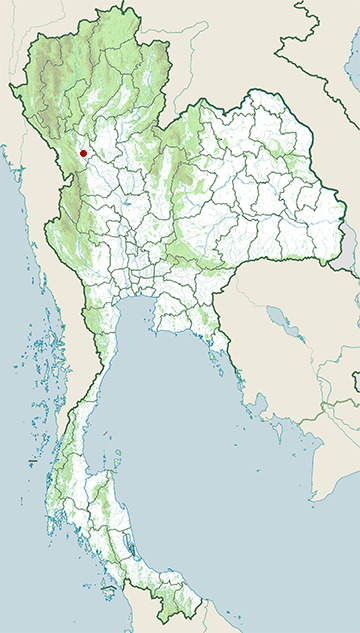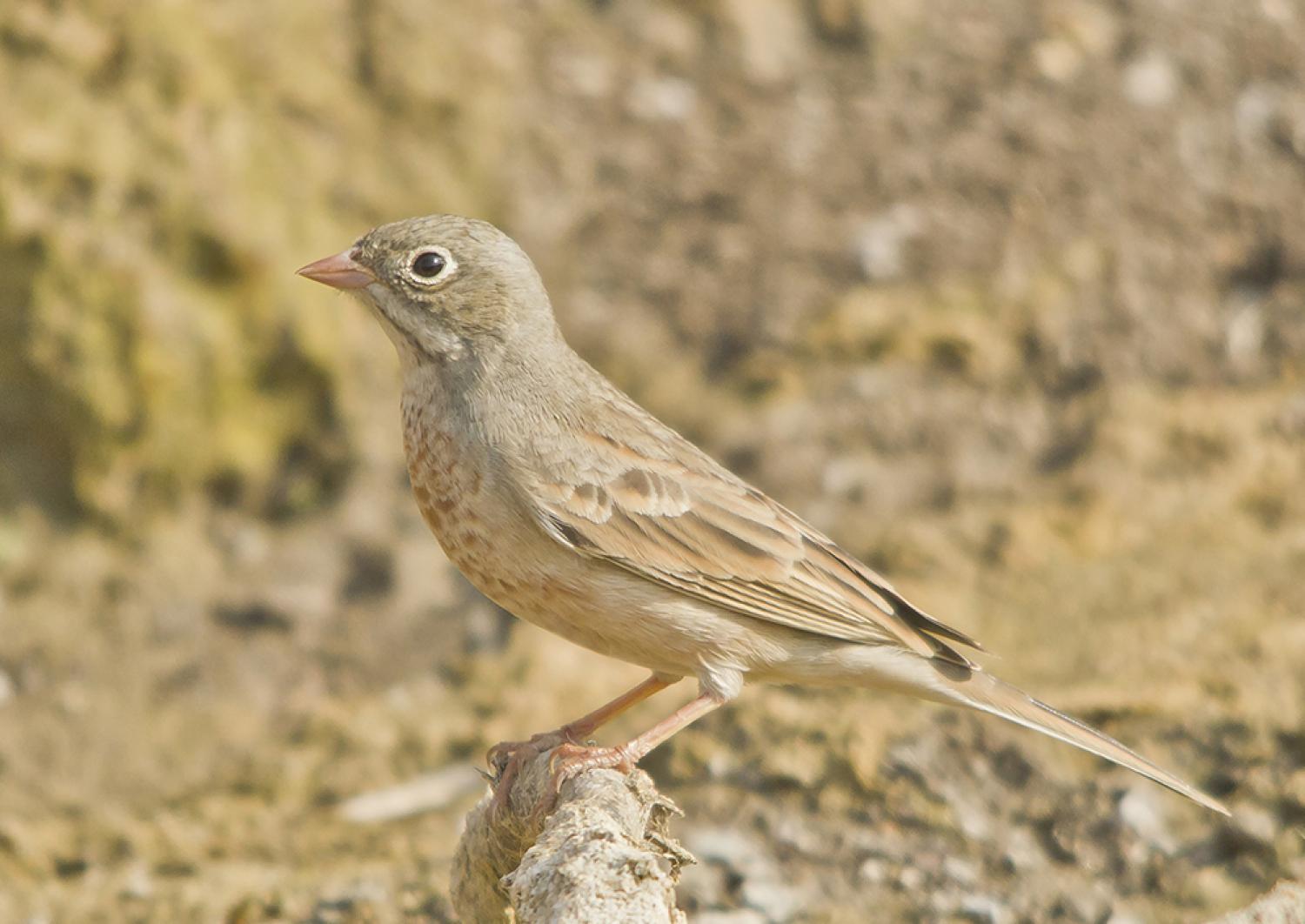Species of Thailand
Grey-necked bunting
Emberiza buchanani
Edward Blyth, 1844
In Thai: นกจาบปีกอ่อนหัวเทาปากส้ม
The grey-necked bunting (Emberiza buchanani), sometimes referred to as grey-hooded bunting (a name also in use for chestnut-eared bunting) is a species of bird in the family Emberizidae. It breeds along a wide distribution range from the Caspian Sea to the Altai Mountains in Central Asia and winters in parts of Southern Asia. Like other buntings it is found in small flocks.
Description
This bunting has a long pink bill and is greyish above. The male has a distinctive white eye-ring that stands out in contrast to the grey hood. The chin and throat are whitish pink and are bordered by grey malar stripes. The underparts are pinkish brown. The female is duller but the moustachial stripe can appear more noticeable. The outer tail feathers are whitish.
The species was described by Edward Blyth based on a drawing by Francis Buchanan-Hamilton after whom the species is named. It has been suggested that the actual date of the description was 1845 due to delays in the publication of the journal of The Asiatic Society. A supposed type specimen in the Indian Museum was never located.
In winter it makes a short subdued click note but the song is a metalling jingle made of swee-swee notes ending with a dzwe-ee-dul.
Three subspecies are noted nominate buchanani, neobscura, and ceruttii.
Habitat and distribution
This bunting is found mainly in dry and open habitats, often stony, scrubby hillsides covered with low thorn scrub. Birds that breed in the Baluchistan region winter in India moving through Gujarat in September and returning in March to their breeding grounds. It is found in Afghanistan, Armenia, Azerbaijan, Bhutan, Nepal, China, Hong Kong, India, Iran, Israel, Kazakhstan, Mongolia, Oman, Pakistan, Russia, Syria, Tajikistan, Turkey, Turkmenistan, and Uzbekistan.
It is an extremely rare vagrant north of its breeding range, with recent records from Finland and the Netherlands, though wanderers may be overlooked due to its similarity, in non-breeding plumage, to the closely related and far commoner ortolan bunting.
They winter in parts of Africa, West Asia, and parts of South Asia as far south as Sri Lanka.
Its natural habitat is temperate grassland mainly below 7000 ft. In winter it is found in weedy or stubbly fields. It nests on the ground under some overhanging vegetation. The nest is lined with grass and hair. The song given from a perch is a series of short and shrill notes that increase in volume.
A tick Hyalomma turanicum has been recorded on birds from Kazakhstan.
Claud Ticehurst noted that males and females migrated separately.
This article uses material from Wikipedia released under the Creative Commons Attribution-Share-Alike Licence 3.0. Eventual photos shown in this page may or may not be from Wikipedia, please see the license details for photos in photo by-lines.
Category / Seasonal Status
Wiki listed status (concerning Thai population): Rare
BCST Category: Recorded in an apparently wild state within the last 50 years
BCST Seasonal status: vagrant (non-breeding visitor with three or fewer records)
Scientific classification
- Kingdom
- Animalia
- Phylum
- Chordata
- Class
- Aves
- Order
- Passeriformes
- Family
- Emberizidae
- Genus
- Emberiza
- Species
- Emberiza buchanani
Common names
- Thai: นกจาบปีกอ่อนหัวเทาปากส้ม
Conservation status

Least Concern (IUCN 3.1)
Photos
Please help us review the bird photos if wrong ones are used. We can be reached via our contact us page.
Range Map

- Mueang Tak District, Tak
